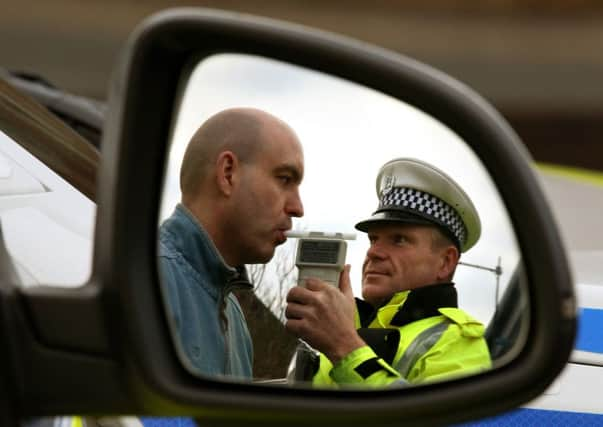Deaths from drug driving rise after alcohol limit cut


The rise in drug use among fatally injured drivers was discovered in the first study of its kind to compare the results of forensic toxicology analysis of the deceased before and after the law change.
The findings led to road safety campaigners renewing their calls for Scotland to follow England and Wales’ example and accelerate its plans to introduce drug driving limits north of the border.
Advertisement
Hide AdAdvertisement
Hide AdThe research found that of the 38 fatal accidents that were examined in the year before the limit was tightened, evidence of illegal or prescription drugs was found in 14 of the drivers.
In the year after the change to reduce the alcohol limit from 80 to 50 mg/ml, evidence of illegal or prescription drugs was found in 27 of 51 fatalities.
When it came to evidence of drinking, alcohol was found in six of the 38 fatalities in the year before the law change. In the year after alcohol was found in nine of the 51 fatalities. The authors quoted a survey suggesting most Scottish drivers did not believe their driving was adversely affected by drug use. It also quoted research suggesting people felt their chances of being caught drug driving were lower than being caught drink driving.
Study author Hilary Hamnett, of Imperial College London, said: “There is always the possibility when there is this kind of intervention which cracks down on one thing that people get the idea that their chances of being caught drink driving are high. Whereas they might not believe their chances of being caught drug driving are high and think they are less likely to be caught.”
Detailed analysis of the results found that the proportion of fatalities where cannabis was found remained around the same in Scotland. There was, however, a notable increase in the amount of opioids detected – a class of drugs that can include narcotic pain relievers such as codeine, which can be taken via prescription, or abused.
There were also increases in prescription drugs such as antidepressants, illegal stimulants such as cocaine, and over-the-counter drugs such as valium and sleeping pills, which can be prescribed or sold illegally.
Overall, the number of Scottish fatalities in road accidents went from 203 in 2014 – before the law change – to 168 in 2015.
The Scottish Government has said drug-driving limits and roadside testing are to be introduced next year, bringing Scotland into line with England and Wales, where they were introduced in 2015.
Advertisement
Hide AdAdvertisement
Hide AdNeil Greig of IAM RoadSmart, which has been campaigning for drug testing, said: “This study adds more weight to my argument. There has always been this argument that people might switch to using drugs because they thought they would get away with it and this study seems to show that is a possibility.”
A Scottish Government spokesperson said: “As acknowledged in this paper, the research does not conclude that the increase in drug prevalence among fatally injured drivers and motorcyclists is a direct result of the introduction of the new drink driving limit.”
“It is already a long-standing offence to drive while impaired through drugs and we confirmed in the 2017-18 Programme for Government our intention to create a new criminal offence of drug driving – coming into force next year, alongside the introduction of updated roadside testing technology.”